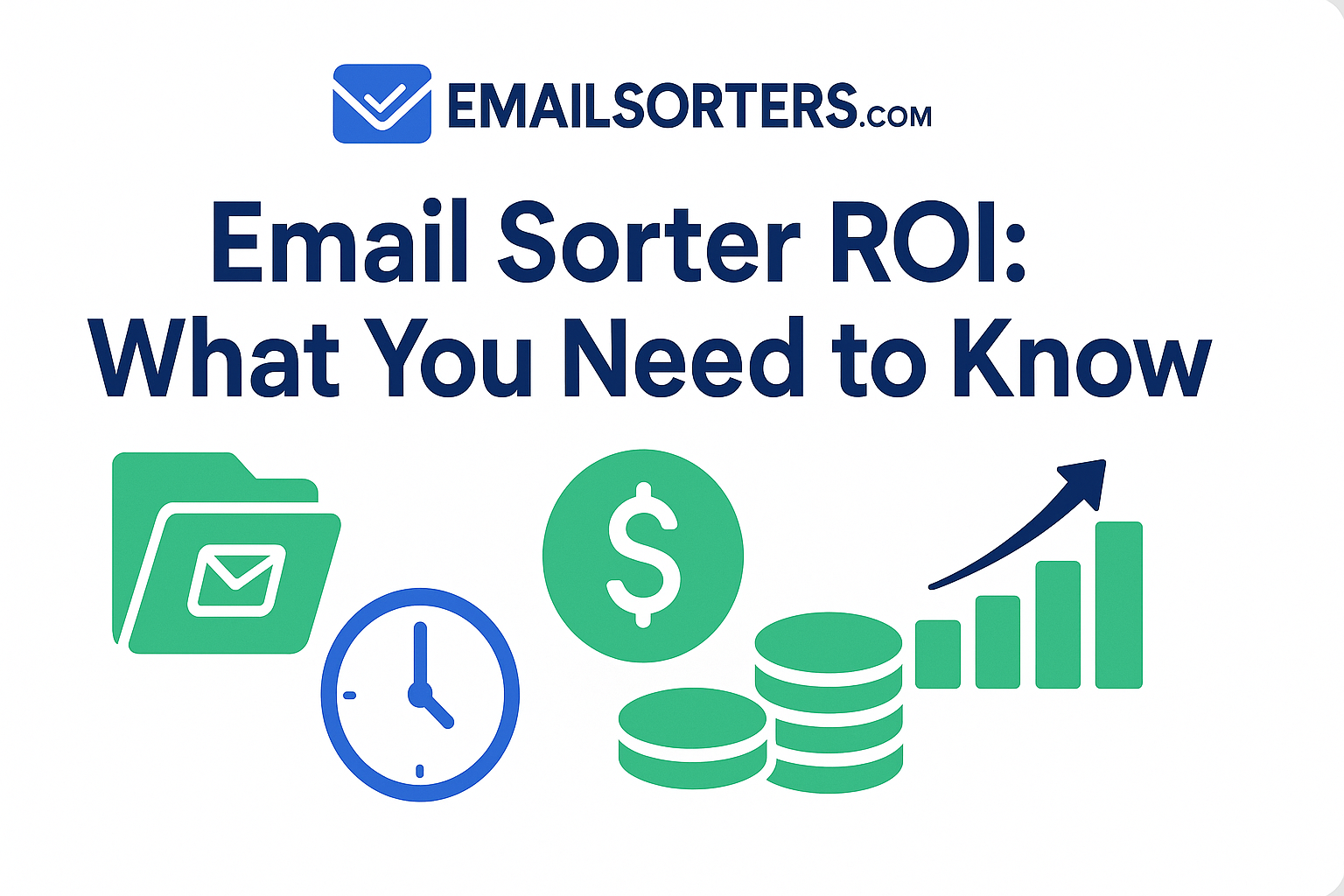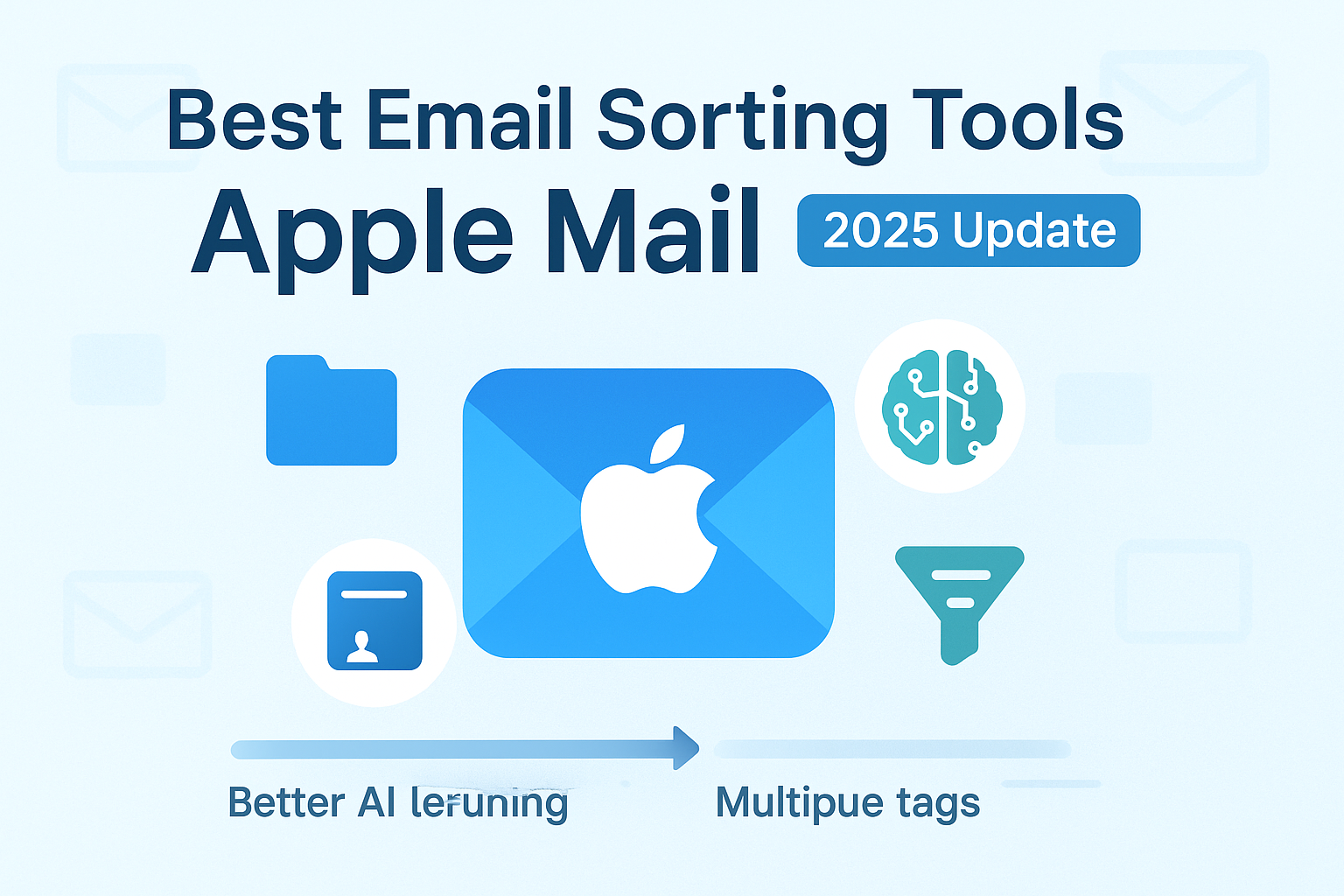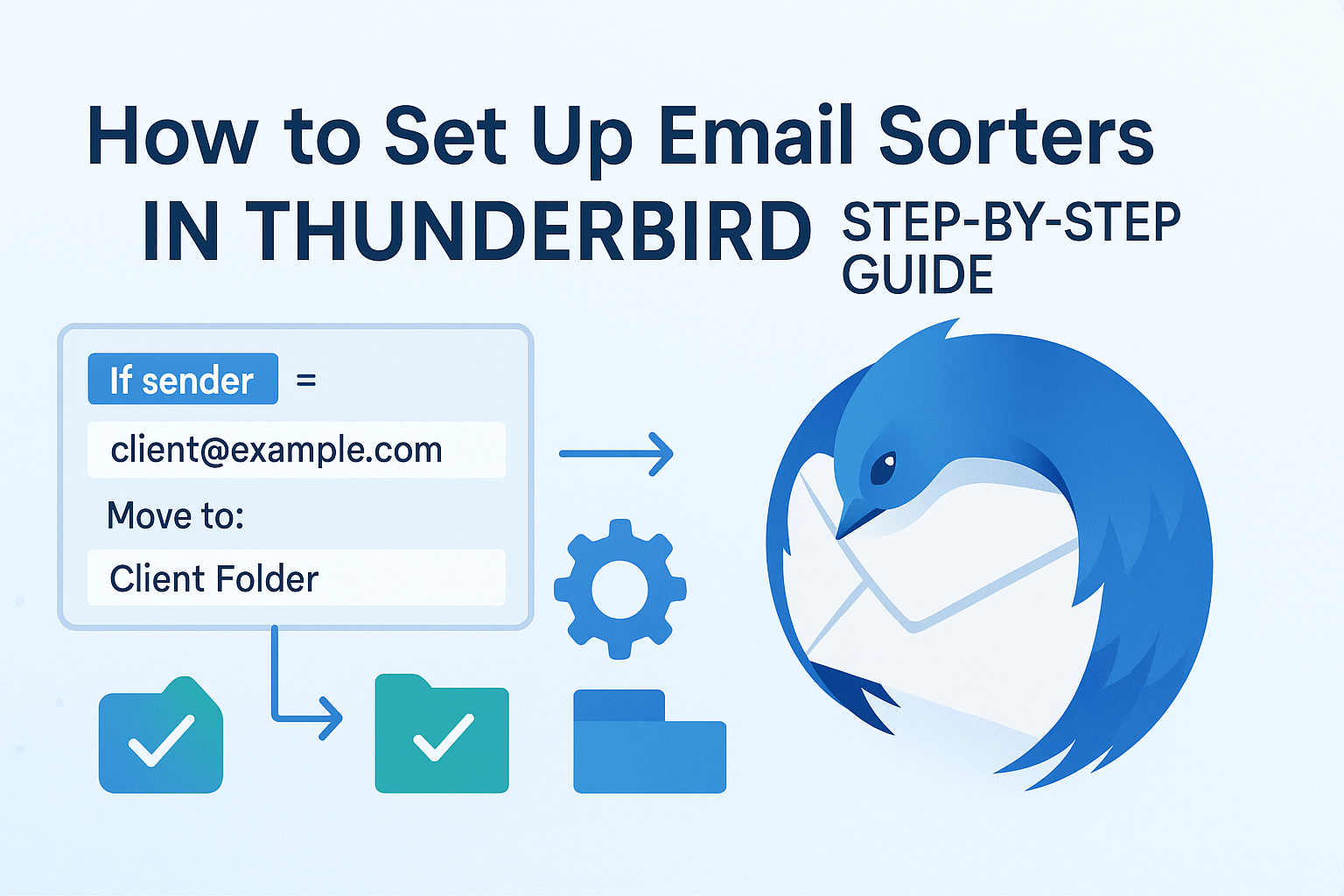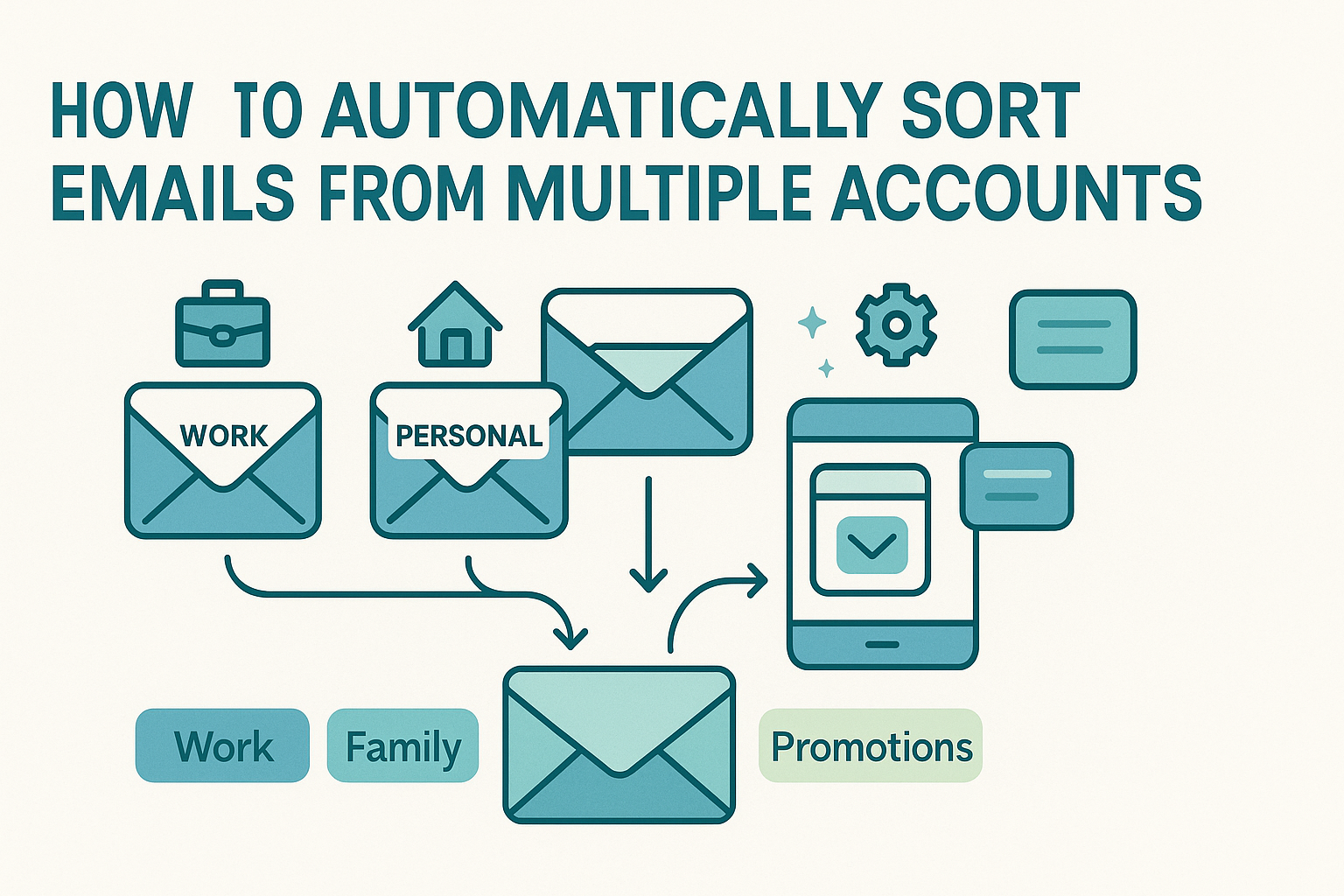Email Sorter ROI isn’t just a tech buzzword, it’s the key to saving time, cutting costs, and boosting productivity. But here’s the catch: most people don’t even realize how much they’re leaving on the table.
What if your overflowing inbox is quietly draining your team’s efficiency, and your budget?
In this guide, we’ll break down exactly how email sorters impact your bottom line, with simple tips whether you’re just starting or optimizing a business workflow.
Let’s dive in and see how a smarter inbox can actually pay you back.
What is an Email Sorter ROI?
Email Sorter ROI (Return on Investment) measures the value gained from using an email sorting tool compared to its cost. It quantifies how much time, money, and productivity the tool saves your business.
For example, an email sorter organizes incoming emails automatically by tagging, categorizing, and routing them to the right place without manual effort. This means employees spend less time managing inboxes and more time on tasks that drive revenue. The ROI comes from:
- Time savings: Less time spent reading, sorting, or forwarding emails.
- Improved productivity: Faster response times and reduced mental fatigue.
- Fewer errors: Important emails don’t get lost, ensuring critical work is completed.
- Cost savings: Automation reduces the need for extra support staff to manage emails manually.
- Better customer experience: Faster, organized responses improve satisfaction and retention.
Email Sorter ROI is the direct and indirect financial and operational benefit your business gains by implementing an email sorting tool, making workflows more efficient and inbox management effortless.
Why ROI Matters in Email Management
ROI, or return on investment, measures the financial and operational benefits of a tool relative to its cost. In email management, ROI isn’t just about dollars saved—it’s about time, accuracy, and customer satisfaction. Hard benefits include reduced labor costs and faster response times, while soft benefits include happier employees and better customer experiences.
For businesses drowning in emails, the cost of inefficiency is steep. Employees can spend hours sorting through messages, leading to missed leads, delayed responses, and frustrated customers. An email sorter tackles these pain points, delivering measurable gains that justify its investment. By calculating both tangible and intangible benefits, you can see why email sorting software is a game-changer.
Core Benefits of Using an Email Sorter ROI
Email sorting software delivers a range of benefits that directly impact your bottom line. Here’s how it transforms operations:
Saves Employee Hours
Manually sorting emails is a time sink. Studies suggest employees spend up to 2.5 hours daily on email management. An email sorter automates repetitive tasks, freeing up hours for higher-value work like strategy or customer engagement. For a small business, this could mean saving 10–20 hours weekly; for enterprises, the savings scale dramatically.
Reduces Response Time
Speed matters in customer communication. An email sorter prioritizes urgent messages and routes them to the right team, slashing response times. For example, a support query can be tagged and assigned instantly, ensuring customers aren’t left waiting. Faster responses lead to happier clients and fewer escalations.
Boosts Customer Satisfaction
Customers expect quick, accurate replies. Email sorting software ensures inquiries are handled promptly and routed correctly, reducing errors. A seamless experience builds trust and loyalty, which translates to repeat business and positive reviews. In industries like e-commerce, this can make or break your reputation.
Improves Lead Management
Missed leads are missed revenue. An email sorter identifies and flags potential sales opportunities, ensuring they don’t get buried in a cluttered inbox. By streamlining lead management, businesses can nurture prospects more effectively, boosting conversion rates and revenue.
Real-World Example: Calculating ROI
Let’s break down the ROI of email sorting with a practical example. Suppose a mid-sized business receives 1,000 emails daily, and employees spend an average of 3 minutes per email on sorting, reading, and routing. That’s 3,000 minutes (or 50 hours) daily. At an average employee cost of $30/hour, the daily cost of email management is $1,500.
Now, introduce an email sorter that automates 80% of this process. The time spent drops to 10 hours daily, saving 40 hours or $1,200 per day. Over a year (250 working days), that’s $300,000 in savings. If the email sorter costs $10,000 annually, the ROI is:
ROI = (Savings – Cost) / Cost x 100 = ($300,000 – $10,000) / $10,000 x 100 = 2,900%
This doesn’t account for soft benefits like improved customer satisfaction or fewer missed leads, which add even more value. For larger businesses with higher email volumes, the savings scale exponentially.
Email Sorting and Automation Tools That Work Together
Email sorters don’t operate in isolation—they shine when integrated with other tools. Here are some complementary platforms:
- CRMs (e.g., Salesforce, HubSpot): Email sorters sync with CRMs to tag leads and update customer records automatically.
- AI Assistants (e.g., Zendesk, Intercom): These tools enhance email sorting with automated responses and chatbot support.
- Workflow Automation (e.g., Zapier, Make): Connect email sorters to other apps for seamless task automation, like creating tickets or updating spreadsheets.
By combining AI email categorization tools with these platforms, businesses create a cohesive ecosystem that maximizes efficiency. Read more about how email sorters streamline workflows to see how these integrations work in practice.
Internal Challenges Solved by Email Sorting
Email overload creates internal chaos. Here’s how email sorting software addresses common pain points:
Overloaded Support Inboxes
Support teams often face a deluge of emails, from simple queries to urgent complaints. An email sorter categorizes messages by urgency or topic, ensuring critical issues are addressed first. This keeps inboxes manageable and prevents team overwhelm.
Lost or Ignored Customer Messages
Nothing frustrates customers more than being ignored. Email sorters flag important messages, reducing the risk of missed emails. Automated notifications can also alert teams to follow up, ensuring no customer falls through the cracks.
Poor Prioritization
Not all emails are equal. Without a system, employees waste time on low-priority messages while urgent ones wait. Email sorting software uses rules or AI to prioritize emails, ensuring teams focus on what matters most.
Burnout in Service Teams
Constantly managing a chaotic inbox leads to stress and burnout. By automating repetitive tasks, email sorters let employees focus on meaningful work, improving morale and retention. This is especially critical for customer support-heavy businesses.
Industries That Benefit the Most
Email sorting software is a versatile tool, but certain industries see outsized benefits:
- E-commerce: Handles high volumes of customer inquiries, returns, and order confirmations.
- SaaS: Manages support tickets, feature requests, and churn prevention emails.
- Healthcare: Ensures timely responses to patient inquiries while maintaining compliance.
- Legal: Organizes client communications and sensitive documents efficiently.
- Finance: Streamlines client onboarding, inquiries, and transaction-related emails.
- Customer Support-Heavy Businesses: Reduces response times and improves service quality.
These industries rely on fast, accurate communication, making email automation a must-have for improving support inbox productivity.
How to Choose the Right Email Sorter Tool
Not all email sorters are created equal. Here’s what to look for when choosing one:
- Accuracy: The tool should correctly categorize emails using AI or rules-based systems. Look for machine learning capabilities that improve over time.
- Integrations: Ensure compatibility with your CRM, helpdesk, or workflow automation platforms.
- Ease of Setup: A user-friendly interface and minimal setup time are key for quick adoption.
- Support: Reliable customer support is crucial for troubleshooting and onboarding.
- Cost: Balance features with budget. Some tools offer tiered pricing based on email volume or team size.
Test multiple options and request demos to ensure the tool fits your needs. For more insights, check out this guide by Zendesk on the power of email automation for support teams.
Final Thoughts: ROI Isn’t Just a Number
The ROI of email sorting software goes beyond dollars and cents. While the cost savings are significant—potentially thousands of hours and dollars annually—the strategic value is equally compelling. Faster responses, happier customers, and more focused employees create a virtuous cycle that drives growth. When evaluating email automation, consider both the immediate financial impact and the long-term benefits to your business’s efficiency and reputation.
Investing in an email sorter isn’t just about solving today’s inbox chaos—it’s about building a foundation for scalable, customer-centric operations. Take the time to assess your needs, calculate potential savings, and choose a tool that aligns with your goals. The returns will speak for themselves.




